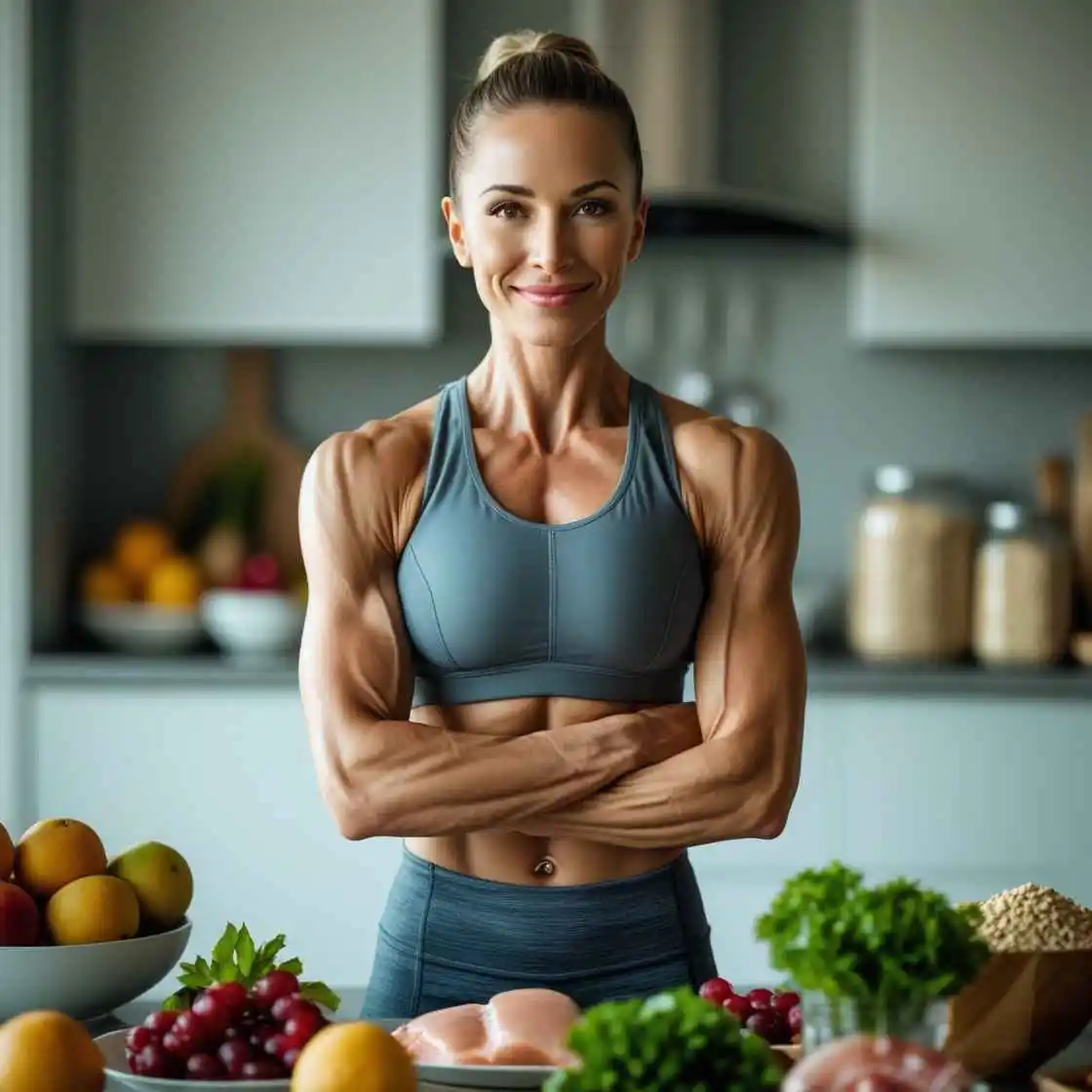Introduction
Losing fat while preserving muscle can be challenging, but a high-protein macro meal plan can make all the difference. The right balance of macronutrients, protein, carbohydrates, and fats fuels your body, keeps you full, and maximizes fat-burning potential.
If you want to create a structured, sustainable, and effective fat-loss meal plan, you’re in the right place. This guide breaks down everything you need to know about high-protein eating, answers common questions, and provides actionable strategies to help you reach your goals.
1. Why a High-Protein Macro Meal Plan Works for Fat Loss
Protein is the foundation of fat loss success. Here’s why:
- Boosts metabolism: Your body burns more calories digesting protein than carbs or fats (Thermic Effect of Food, TEF).
- Preserve lean muscle: When losing weight, a high-protein intake helps prevent muscle loss.
- Keeps you full longer: Protein curbs hunger and reduces cravings, helping with portion control.
- Supports fat burning: Higher protein intake aids the body’s use of stored fat as energy.
💡 Fact: Studies show that people who consume 25-30% of their daily calories from protein experience greater weight loss and fat loss than those with lower protein intake.
2. How to Calculate Your Macros for Fat Loss
Before building your meal plan, you need to determine the right macronutrient split:
- Calculate Your Total Daily Energy Expenditure (TDEE): Use an online calculator to estimate how many calories you burn daily.
- Set a Caloric Deficit: Reduce your intake by 300-500 calories daily for sustainable fat loss.
- Determine Your Macro Split:
- Protein: 1.0-1.2 grams per pound of body weight
- Carbs: 30-40% of total daily calories
- Fats: 20-30% of total daily calories
💡 Example: A 160-pound person aiming for fat loss should consume 160-192g of protein daily.
3. Best High-Protein Foods for Fat Loss
Not all protein sources are created equal. Here are the best options:
Lean Protein Sources:
- Chicken breast (27g per 3 oz)
- Egg whites (3.6g per egg white)
- Turkey (25g per 3 oz)
- Whitefish (20g per 3 oz)
- Lean beef (24g per 3 oz)
Plant-Based Protein Sources:
- Lentils (18g per cup)
- Tofu (20g per cup)
- Quinoa (8g per cup)
- Chickpeas (15g per cup)
High-Protein Dairy:
- Greek yogurt (20g per cup)
- Cottage cheese (28g per cup)
- Whey or plant-based protein powder (20-25g per scoop)
💡 Fact: Research suggests that consuming protein within 30 minutes post-workout optimizes muscle recovery and fat loss.
4. Sample High-Protein Macro Meal Plan
Here’s a structured high-protein meal plan to support fat loss:
Breakfast:
- Scrambled egg whites with spinach and turkey (30g protein)
- Oatmeal with chia seeds and a scoop of protein powder (25g protein)
Snack:
- Greek yogurt with almonds and honey (25g protein)
Lunch:
- Grilled chicken breast with quinoa and steamed broccoli (45g protein)
Snack:
- Cottage cheese with blueberries and walnuts (20g protein)
Dinner:
- Baked salmon with roasted Brussels sprouts and sweet potato (40g protein)
Post-Workout Shake:
- Whey protein shake with almond milk and banana (30g protein)
💡 Fact: Eating protein evenly throughout the day maximizes muscle protein synthesis and helps with satiety.
5. Common FAQs About High-Protein Diets for Fat Loss
Q: Can I eat too much protein?
A: While protein is essential, excessive amounts (beyond 2.2g per kg body weight) may lead to digestive discomfort and kidney strain in individuals with pre-existing conditions.
Q: Will high-protein diets cause weight gain?
A: No, as long as you maintain a caloric deficit. Protein helps you preserve muscle mass while shedding fat.
Q: Should I track macros daily?
A: If you’re serious about fat loss, tracking macros using apps like MyFitnessPal can help ensure you’re hitting your targets consistently.
Q: How do I get enough protein if I’m vegetarian?
A: Prioritize plant-based proteins like lentils, chickpeas, tofu, quinoa, and protein-rich dairy alternatives.
Q: Can I eat carbs on a high-protein diet?
A: Yes! Carbs provide energy for workouts and daily activities. Opt for whole grains, fruits, and vegetables.
6. Additional Tips for Success
✅ Plan Your Meals – Prepping meals reduces the temptation to eat unhealthy options. ✅ Stay Hydrated – Water supports digestion and metabolism. ✅ Get Enough Sleep – Poor sleep can sabotage fat loss and muscle recovery. ✅ Combine Strength Training with Cardio – Resistance training helps preserve lean muscle while losing fat. ✅ Be Consistent – Fat loss is a long-term process; stick to your plan and trust the results will come.
Conclusion
A high-protein macro meal plan is one of the most effective ways to lose fat while maintaining muscle mass. By carefully structuring your meals, tracking macros, and choosing quality protein sources, you’ll set yourself up for long-term success.
Are you ready to take control of your nutrition and reach your fat-loss goals? Start today by planning your next high-protein meal!
